CONTACT US
Natural Language is Structured Data: Your NLP Questions Answered
So what do we mean when we say natural language is structured data when talking about Natural Language Processing (NLP)? In today’s interconnected, data-driven world data is gathered in a multitude of ways and from countless sources. And while we typically see text data as lacking structure, we can find that the rules of natural language provide more structure to that data than one might imagine.
Natural Language is Structured Data, if you’re looking for it
Data can be represented and stored in many different structures depending on the nature of the data in question. We generally describe this difference in how gathered information can be stored as structured vs unstructured data. However, with the explosion of data over the last decades, this formerly binary distinction has evolved into more of a range of structure, now with terms like “semi-structured” data becoming ever more common in our language around this topic.
When comparing the two ends of this gradient scale of data structures what we typically call structured data is data stored in a rigid, tabular format that can be manipulated via mathematical functions due to its organized nature. While on the other end of this scale lies unstructured or textual data. And while textual data sits on one end of our scale, data containing natural language is not without its own kind of structure and so therefore natural language is structured data, and in a very meaningful sense.
Check out a powerful new natural language interface to your graph database / knowledge graph that enables your non-technical users to ask natural language questions right to the database itself (meet Sherlock™ from Graphable).
Raw Text Data vs. Natural Language Data
When it comes to leveraging natural language, NLP techniques are the most valuable way to derive value from data. However, people often think of NLP applying to any data which contains text. This oversimplification ignores a key aspect of the field of NLP and how its techniques are designed. NLP relies on the predictable and very structured patterns of natural language in order to extract information.
While this observation may seem trivial to seasoned NLP practitioners, it is one that is often overlooked by anyone newer to NLP and working with “unstructured” data. There is a seemingly endless amount of textual data in the world, and not all of it contains naturally occurring language. This is an important distinction as language itself is in fact very structured.
As earliest human culture started to develop, we began to form basic structures and patterns around sounds which created the first forms of human language. This emerging structure enabled us to use patterns, tone, and pitch to encode more information into our sounds than ever before. This further enabled us to communicate faster, convey more complex concepts, and ultimately became one of the most important elements in elevating our place in the world as a species. This structure also imbues our written language with richer information than that of simple raw text which can be generated via other means than human language (e.g. digital) such as automated point of sale systems. For example:

These systems generate massive amounts of textual data lacking any real, discernible structure at the source, but it lacks the structure and meaning of natural language and is therefore ill-suited for NLP processing. Because of this distinction, it is important that we are mindful of the nature of our text– not just that it is text– as we are looking at solutions for working with our textual data. To leverage NLP, it must be natural language text data.
Natural Language is a Graph
We can also take advantage of the patterns within natural language data through the power of graph databases. By leveraging these patterns through the use of word embedding techniques such as Word2vec, we can construct a graph containing related keywords by measuring their cosine similarity. This can provide a wealth of information when examining how words are used and related to one another and to related knowledge both in and outside of our organizations. Among many other techniques unique to graph database, we can further utilize graph by applying graph algorithms such a pageRank to learn which words are most influential within a given set of documents.

Conclusion
This graph database schema represents only one of many ways in which graphs can capture the intrinsic structure natural language offers us when performing text analysis, since natural language is structured data in the end. If the graph world is new to you, check out our blog article “What is a Graph Database” to find out more. For additional information around graphs for NLP and how Graphable can help, be sure to check out our Neo4j Consulting to learn more.
If you are looking for more on graph NLP-related topics, check out our text to graph machine learning article, or our post on the order of steps in natural language understanding.
Still learning? Check out a few of our introductory articles to learn more:
- What is a Graph Database?
- What is Neo4j (Graph Database)?
- What Is Domo (Analytics)?
- What is Hume (GraphAware)?
Additional discovery:
- Hume consulting / Hume (GraphAware) Platform
- Neo4j consulting / Graph database
- Domo consulting / Analytics - BI
We would also be happy to learn more about your current project and share how we might be able to help. Schedule a consultation with us today. We can also discuss pricing on these initial calls, including Neo4j pricing and Domo pricing. We look forward to speaking with you!


